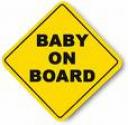When is an accident not an accident? When it’s preventable.
A Pennsylvania father was in the news for leaving his 13-month old son in an SUV with a loaded shotgun so he could retrieve a deer carcass. He explained that he could see the vehicle from the woods, and the gun wasn’t pointed at the child. He received three years probation, a $500 fine and ordered to take parenting classes. The father apparently didn’t see anything wrong with it.
I was recently in a Dunkin’ Donuts parking lot and noticed a three-year-old in her car seat with the car running and no adults in the car! I stood there until someone (possibly the mother) appeared and glared at her. I was too furious to speak, but next time (and I hope there won’t be a next time) I would stand by the car and immediately call 911. Would this be the parent to cry on the nightly news for the safe return of their child in the event of a carjacking?
These incidents are clearly preventable by applying some common sense, which means they do not qualify as accidents. Folks, there is no shortage of real accidents, so let’s be more careful and conscious to prevent the incidents we can.
Safety doesn’t happen by accident. ~Author Unknown
Here are some wonderful and fun safety quotes from the Naval Safety Center. Moms everywhere will love these!
